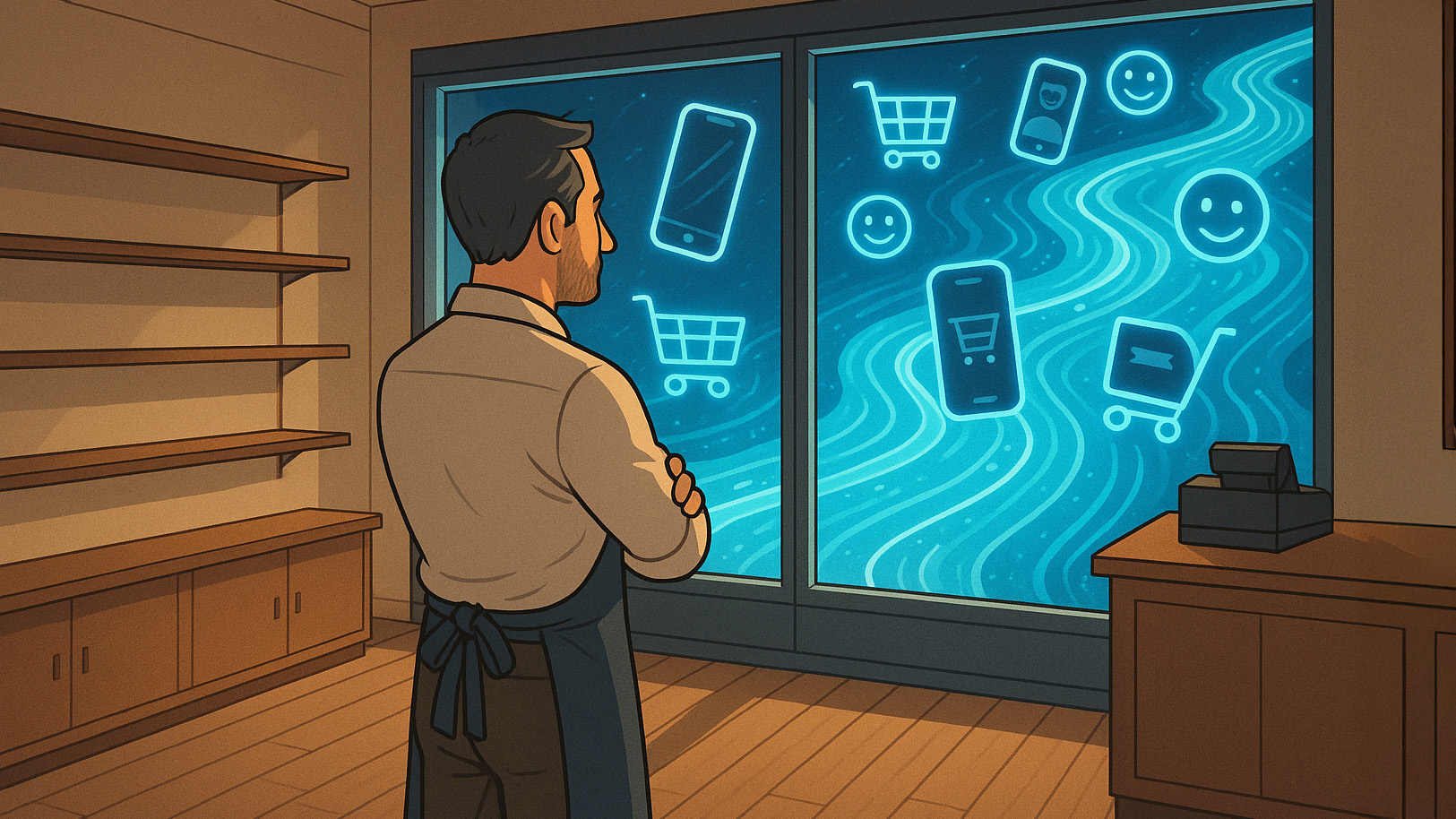Picture this. You’re running a perfectly respectable business. Phones ring, orders come in, people know your name. Then one morning, you realise your customers have stopped calling. They’re still out there—somewhere—but instead of ringing, they’re scrolling. They’re reading reviews, comparing prices, watching videos about products you sell. And while you’re waiting for the phone to ring, someone else is taking their money with a single click.
That’s the brutal magic of the digital customer journey. It’s what happens when people’s buying habits migrate online faster than your business can say “we’ll update the website next quarter.” You might think your loyal customer base will hang on, but loyalty today is only as strong as your loading speed.
It’s not that customers have become disloyal—it’s that they’ve become digital. They expect brands to move at their pace, which is somewhere between caffeine and lightning. They’re not just buying products anymore; they’re buying experiences. And if your customer journey doesn’t start where theirs does—on their screens—you’re invisible.
A digital customer journey isn’t a buzzword dreamed up by consultants who charge by the hour. It’s the map of how your customers behave when they decide they need something and go looking for it online. From that first spark of curiosity to the late-night click that seals the deal, they’re leaving you clues in every scroll, search, and swipe. Ignore those clues, and you’re not just missing out—you’re erasing yourself.
Most businesses think they already have a digital journey. There’s a website, a contact form, maybe even an email newsletter if someone remembers the password. But that’s not a journey; that’s a dead-end alley with a nice signpost. A true digital customer journey feels seamless. A person sees your ad, reads your story, clicks your link, and ends up somewhere that makes sense. Each step reassures them that they’re in the right place. Each moment says: we get you.
When it doesn’t, you can almost hear the click of them leaving.
It’s a funny thing—companies love to talk about being customer-centric, but then they design their digital presence entirely around what suits them. The contact page says “call during office hours,” as if customers still plan their days around phone queues. The forms demand everything short of a DNA sample. The social media page posts once a month, apologising for being too busy to post. It’s as if businesses are standing in the middle of the digital highway, waving politely while traffic zooms past.
The irony is that transforming the customer journey doesn’t mean becoming less human—it means being more human, just online. The best digital experiences don’t replace empathy with automation; they scale empathy through it. Think about how you shop yourself. You want speed, clarity, and a sense that someone understands what you need before you’ve fully articulated it. You don’t want to dig through layers of nonsense just to get an answer.
In the age of the digital customer journey, convenience isn’t a luxury; it’s the currency. Every click is a test of patience, and patience is extinct. If your checkout takes longer than a thought, your customer’s already comparing your competitor’s site while you’re still loading the payment gateway.
The shift to digital behaviour didn’t happen overnight—it crept up while everyone was busy perfecting their voicemail greeting. Smartphones, social media, next-day delivery—they’ve rewired how people think about buying. Discovery, comparison, decision—it’s all one fluid process now. The path isn’t linear anymore; it’s more like a maze where the walls keep moving. And the businesses thriving today aren’t the ones with the loudest ads; they’re the ones whose journeys feel effortless.
Take a café in Bristol that realised its regulars were ordering through Instagram DMs rather than queueing. Instead of resisting, they leaned in—created a quick ordering link, added a digital loyalty card, and suddenly their morning rush turned into a smooth online ritual. No fancy tech. Just following where the customers already were. The result? More orders, fewer grumpy queue-goers, and a cult following that Starbucks would envy.
That’s what the digital customer journey is really about: paying attention. Not to data points, but to human patterns. Every click tells a story. A long dwell time might mean fascination—or confusion. An abandoned cart isn’t a rejection; it’s hesitation waiting for reassurance. Businesses that thrive in the digital era are those that treat these moments like conversations, not statistics.
The old-world charm of customer service—remembering a name, anticipating a preference—can live online too. Data, when used with care, is just digital intuition. It lets you say, “We thought you might like this,” and actually be right. It’s empathy, quantified.
But many companies still cling to the fantasy that digital transformation is a tech project. They pour money into platforms without understanding people. They automate without empathy, optimise without listening, and then wonder why no one clicks “buy.” A digital customer journey isn’t built with software; it’s built with understanding. The tools come later.
There’s a quiet irony in all this: the more digital the world becomes, the more people crave something that feels personal. They want to feel seen, not processed. They want relevance without intrusion. The brands that strike that balance—showing up in the right place, at the right time, with the right tone—become the ones customers stick with. Not because they’re the cheapest, but because they feel right.
What does a well-designed digital customer journey look like? It looks like effortlessness. It’s when the customer never has to think about the next step. They see an ad that feels oddly familiar, land on a page that answers their unspoken question, and buy without ever wondering if they should. It’s when information flows like conversation, not instruction. The tone is helpful, the design is invisible, the experience feels like common sense.
Of course, designing that kind of journey takes humility. You have to admit that the customer—not you—is the protagonist. You’re just the supporting character, there to make their path easier. It also takes curiosity. You have to want to know what frustrates them, excites them, or makes them pause. And then you have to build around that.
A good starting point? Walk your own journey. Pretend you’re a new customer. Google your business. See what comes up. Click through. Try to buy something. It’s sobering. You’ll notice the broken links, the outdated images, the forms that ask for your childhood postcode. You’ll see how many hoops you make people jump through just to give you money. Then, fix one thing at a time. The magic isn’t in doing everything—it’s in improving what actually matters.
Digital journeys aren’t about perfection; they’re about progress. Each friction removed, each insight applied, builds momentum. Before long, the experience starts to feel smooth, modern, human. And that’s when the numbers begin to shift—not because you bought new software, but because you started behaving like your customers.
The truth is, digital customer journeys aren’t the future—they’re the present. People don’t separate online and offline anymore; they just expect things to work. The businesses still arguing over whether digital matters are like Victorians debating electricity. The conversation’s over. The lights are already on.
So, when your customers go digital, and your channels don’t, the result isn’t a crisis—it’s an invitation. A nudge to evolve, to listen, to connect better. You don’t have to become a tech wizard or reinvent your brand. You just have to follow the path your customers are already walking.
They’ve been leading the way for years. All you have to do is catch up.

